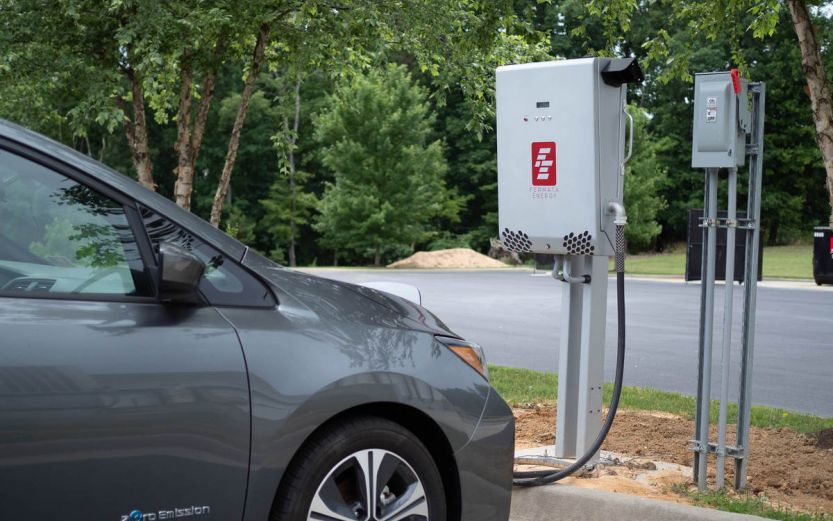US electric vehicle (EV) charger manufacturer Fermata Energy has become the first to receive certification under a new standard introduced by UL.
Fermata has had its vehicle-to-grid (V2G) charging system certified under UL 9741, ‘Investigation for bidirectional electric vehicle charging system equipment’, which was first published on 18 March 2014.
Almost six years to the day later Fermata – which has previously partnered with automakers including Nissan and received investment from backers such as Japanese utility company TEPCO – became certified under the North American safety standard.
Fermata Energy’s website states that the company was founded for two purposes: to accelerate the adoption of EVs and to accelerate the transition to renewable energy. By acting as stationary energy storage systems (ESS), EVs can provide services such as frequency regulation.
Thus far, while V2G technology has existed at least since the early 2000s, and been trialled on a commercial basis in the last five years or so, various barriers exist to widespread adoption. Last year, a research note from consultancy Apricum pointed some of these out, including potential reluctance of owners to allow aggregators access to their batteries, which may have an impact on battery lifetime through causing accelerated degradation of battery cells. Another possible barrier is that trials have only shown very limited commercial revenues being possible for using EV batteries for frequency regulation under most existing market structures.
From the carmakers’ point of view, only a few have given serious thought to enabling the function due to possible impact on warranties, with Nissan being the first to allow its Leaf EV to be used in this way. Earlier this month, sister publication Energy-Storage.news reported on a successful V2G ‘showcase’ project where Leaf EV batteries were used for storing locally generated renewable energy.
V2G has been gaining traction in the UK, with a number of projects springing up, including one in London between Moixa, Honda and Islington Council that has seen five V2G chargers installed to both charge Nissan electric vans and also to feed back into Islington Town Hall.
A larger project – E-Flex, run by a consortium including Cisco, Cenex, Nuvve and Imperial College London among others – is currently exploring the commercial viability of V2G technology in both London and Plymouth.
The E-Flex project suggested that V2G could be best used to aid fleet electrification, with a survey done as part of the project – which is ongoing – finding that 53% of fleet managers believe investing in the technology could help with the transition, and 54% believe investing in V2G could offset the initial costs of the vehicles themselves – often cited as one of the biggest barriers to electrification.
However, at the EnTech event in October 2019, innogy e-mobility UK’s Karl Anders described the UK’s nascent V2G market as a “killing field” until volume increases.
Despite the barriers that exist, V2G technology is likely to have a “bright future,” Apricum experts Florian Mayr and Stephanie Adam, who co-authored that earlier mentioned piece on the consultancy’s website, said. While acknowledging a survey held in Germany by digital association Bitkom that found only 37% of EV owners would be willing to allow their cars to be used for V2G participation, if one large electric mobility market such as China went for it, others might follow quickly.
“With increasing demand for the required components, standardization will improve and economies of scale will kick in. Due to falling costs for hardware, the economic case for a car owner participating in V2G will improve, increasingly outweighing potential disadvantages of a reduced battery lifetime or limitations in car availability,” the Apricum note said.
Meanwhile, Fermata Energy CEO and founder David Slutzky said that bidirectional energy solutions “play an important role in reducing energy costs, improving grid resilience and combating climate change. We’re excited to be the first company to receive UL 9741 certification and look forward to partnering with other organisations to advance V2G applications.”
This story first appeared on Energy-storage.news, additional reporting by Alice Grundy.





